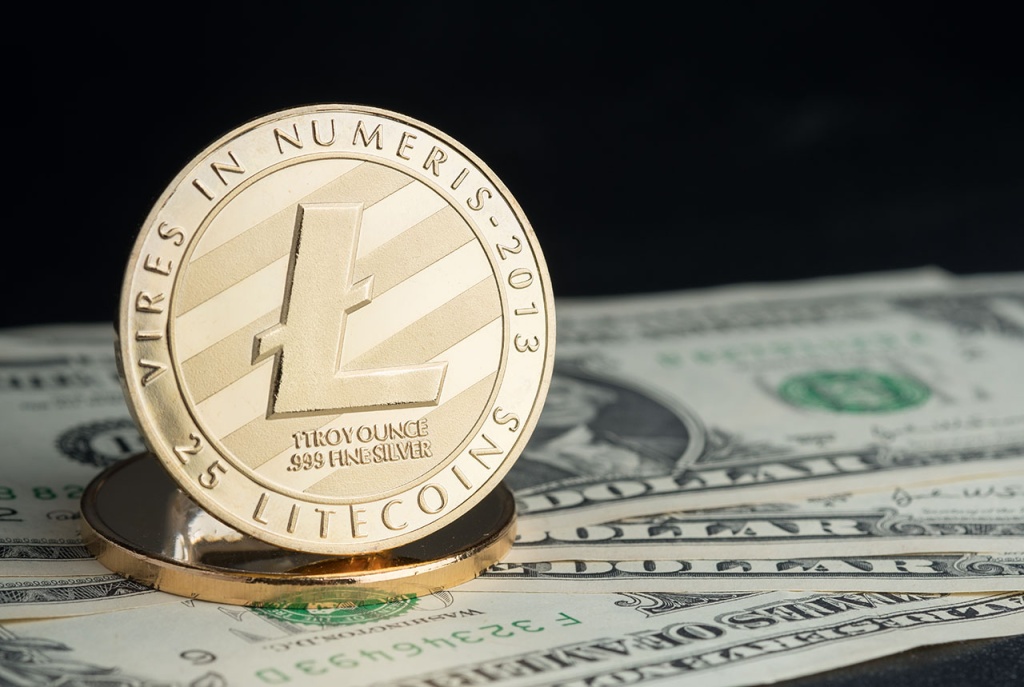One of the first alternative cryptocurrencies, Litecoin (LTC), came onto the scene in late 2011. It started to be “the silver to all the gold provided by Bitcoin.” Over a decade, LTC continues to be one of the biggest crypto assets in the world regarding market capitalization.
Similar to Bitcoin (BTC), Litecoin operates on an independent open-source blockchain. No central authority or third party has any control or influence over the cryptocurrency. Moreover, all node operators within a Litecoin network have a copy of the complete blockchain. This makes sure that any new transactions don’t violate the exchange history or alter existing records. In the same way, it enables miners to efficiently process new transactions and add them to their respective “blocks on the chain.”
Apart from the similarities, Litecoin and Bitcoin have some primary differences. For instance, the former allows faster transactions. There’s also a larger total supply of LTC tokens. In addition, to keep the mining process as fair and transparent as possible, Litecoin utilizes a unique hashing algorithm.
Litecoin: How It All Started?
Charlie Lee, a graduate of MIT and former engineer at Google, is the man responsible for the creation of Litecoin (LTC). His interest in Bitcoin (BTC) ultimately led to the creation of LTC. Following its launch in 2011, Lee accepted the position of Director of Engineering at Coinbase, one of the leading cryptocurrency exchanges in the world, in 2013.
After coming on board at Coinbase, Litecoin took a backseat to its founder’s priorities. He said that Litecoin wasn’t ready or mature enough for growth or scaling. Nevertheless, with his team, Lee continued working on the cryptocurrency’s development in addition to his role at Coinbase.
Towards the end of 2017, he left the exchange to pursue Litecoin’s evolution full-time. The new plan involved the creation of a non-profit entity Litecoin Foundation, dedicated to supporting the crypto trade. Lee now serves as its Managing Director.
Purpose of Litecoin (LTC)
Having played around with Bitcoin since its introduction, Lee wanted to create a token that could serve as “silver to the gold of BTC.” The idea was to develop something by merging the finest qualities of Bitcoin and alternative crypto assets (those that were active at that time).
Hence, Litecoin came about after Lee spent quite a while dabbling into the code-base of BTC to design a fork of its blockchain. By his own admission, this was supposed to be a fun project on the side. However, even the genius founder couldn’t have foreseen Litecoin’s tremendous development and evolution.
The currency stood out because of innovations like the Scrypt hashing algorithm and quicker transaction completion times. It also did away with the “pre-mine” routine, which enables the creators of a blockchain-backed crypto asset to mine coins before its official public launch. This was initially intended to be a way to reward the creators of a cryptocurrency and provide financial support for its further development.
Therefore, to address the concerns of community members who wanted a fair launch and a level playing field for all miners, Lee released Litecoin’s source code and binary a week before the grand reveal. The idea was to allow the public to test the mining procedure before deploying the crypto technology.
In fact, Lee and his team even decided the exact launch time via a public poll on the Bitcointalk forum. He wanted the platform members to pick an hour that worked best for them per their daily routines. As a result, all interested miners were able to start mining LTC tokens at the same time. Since everyone knew the date and time of launch, a simple modification to their data files was all that was needed to start mining Litecoin.
Nevertheless, Litecoin began operations with a small pre-mine. Before going live, Lee and his team pre-mined about 150 LTC tokens. This was supposed to make up the genesis block, the first on the Litecoin blockchain. Two more blocks were also mined in an attempt to confirm the validity and functionality of the system.
Litecoin vs. Bitcoin: The Differences
As already mentioned, Lee’s aim with Litecoin was to overcome the shortcomings hampering Bitcoin. He wanted to make it easier and simpler for traders to accept payments in LTC tokens. To make that happen, the currency enabled faster transaction completion. You can mine a single Litecoin block in approximately two and a half minutes. This is a significant improvement on the 10 minutes it usually takes Bitcoin to do the same.
With Litecoin, merchants don’t have to wait an hour for as little as 6 transactions to be verified by the blockchain system. However, this efficiency brings a security trade-off with it. The accuracy and security of the network might not be the same with quicker transaction processing. That being said, traders and merchants using Litecoin in their exchanges can choose to wait longer. This would allow the network to ensure additional confirmations before adding a block to the chain.
To imitate the generation trajectory of Bitcoin, Lee also altered the halving agents of Litecoin. The generation of the former halves 210,000 blocks. In contrast, the generation of the latter halves every 840,000 blocks. Furthermore, to ensure that the last LTC token is mined at the same time as the final BTC token, Litecoin has set a similar supply cap at 84 million coins.
With regard to the hashing algorithm, Litecoin uses Scrypt, while Bitcoin has been operating with SHA-256. Scrypt is a password-key derivation function designed for greater security against hardware-dependent malware and brute-force attacks.
Tying It All Together…

Today, Litecoin is one of the most liquid cryptocurrencies in the industry. You can easily trade it over all primary cryptocurrency exchanges. Given the low cost of exchanges on the network, many entities use LTC tokens to transfer funds between various lending platforms or exchange forums. This helps them avoid the high transaction fees typically charged by Ethereum and Bitcoin networks.
For more on Litecoin and other cryptocurrencies, keep following this space on The Crypto World.



